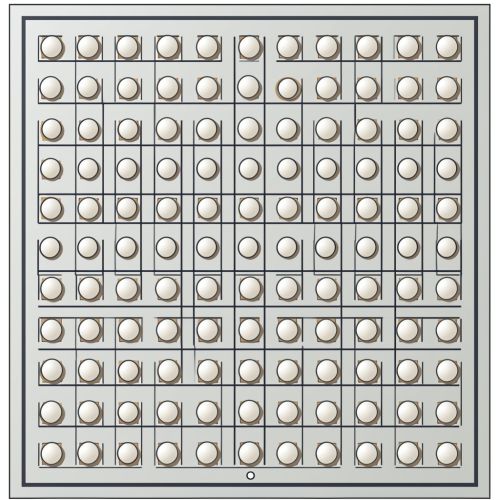Permutation matrix
Definition
A permutation matrix is a square binary matrix that has exactly one entry of 1 in each row and each column and 0s elsewhere. Each such matrix, say P, represents a permutation of m elements and, when used to multiply another matrix, say A, results in permuting the rows or columns of A.
Properties
Permutation matrices have several distinct properties that make them unique among other matrices.
1. A permutation matrix is orthogonal, meaning its transpose is also its inverse. This is due to the fact that when you transpose a permutation matrix, you effectively reverse the permutation, and reversing a permutation twice brings you back to the original order.
2. The determinant of a permutation matrix is either 1 or -1. If the permutation matrix represents an even permutation, the determinant is 1. If it represents an odd permutation, the determinant is -1.
3. The product of two permutation matrices is another permutation matrix. Furthermore, the permutation represented by the product of two permutation matrices is the composition of the permutations represented by the two factors.
4. The eigenvalues of a permutation matrix are always roots of unity. This means they are complex numbers that, when raised to a certain positive integer power, equal 1.
5. The trace of a permutation matrix, which is the sum of its diagonal elements, is equal to the number of fixed points in the permutation.
6. A permutation matrix is always non-singular, meaning it has an inverse.
Construction
A permutation matrix can be constructed from a permutation in the symmetric group S_n. Given a permutation, the corresponding permutation matrix is the matrix that results from permuting the rows of the identity matrix according to the permutation.
For example, consider the permutation (2,3,1) in S_3. This permutation sends 1 to 2, 2 to 3, and 3 to 1. The corresponding permutation matrix is:
\[ \begin{bmatrix} 0 & 1 & 0 \\ 0 & 0 & 1 \\ 1 & 0 & 0 \\ \end{bmatrix} \]
Applications
Permutation matrices are used in various fields of study, including computer science, statistics, and physics.
1. In computer science, permutation matrices are used in algorithms for sorting and searching. They are also used in network routing, where they can represent permutations of data packets.
2. In statistics, permutation matrices are used in the design of experiments, where they can represent different orderings of treatments.
3. In physics, permutation matrices are used in the study of quantum mechanics, where they can represent the exchange of identical particles.


